Barriers Keep Many Disabled New Yorkers Trapped in Poverty
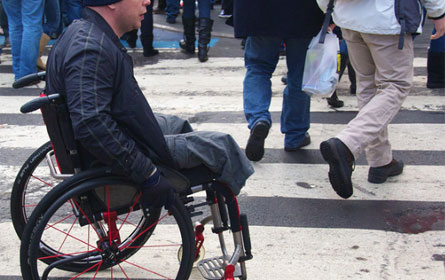
As dire as the economic situation is for New Yorkers overall, the challenges confronting those with disabilities in this economic climate loom as truly staggering. Almost one third -- 32 percent -- of all disabled New Yorkers live in poverty.
The median household income for these disabled city residents is $30,555, compared to about $58,072 for the working-age population without disabilities. This income gap of $27,517 is substantially greater than the divide in the United States and somewhat larger than that for New York state as a whole.
No single reason accounts for the difficulties facing disabled New Yorkers. Some of it, of course, arises from the overall high rates of of poverty and homelessness in New York City, a crisis the Bloomberg administration by many accounts has been slow to address.
Joel Berg, executive director of the New York City Coalition Against Hungerand a frequent administration critic, said the data has finally captured the mayor's attention. However, Berg wrote, his administration still doesn't quite get it.
Human Resources commissioner Robert Doar "continues to make the argument that NYC is doing a fine job fighting poverty because we still have lower overall poverty rates than Detroit of Philadelphia,” Berg complained in an email. "I am surprised he doesn't brag that we are doing better than Burkina Faso and North Korea."
As poverty increases, advocates say people with disabilities face a series of obstacles -- starting with shortcomings in special education and continuing on to problems in health insurance, job placement programs and the very government offices designed to address their needs. Those with disabilities face systemic discrimination and barriers within both the public and private sectors. Together, all of this traps many disabled New Yorkers in a sequence of poverty.
The Statistical Story
Whatever the reasons for the distress, the numbers portray a serious crisis. Over the summer, the Center for Independence of the Disabled, New York released a report analyzing the state of people with disabilities in New York 20 years after the passage of the Americans with Disabilities Act.
"We are more likely to be hungry and impoverished than our non-disabled counterparts and rely on food and health safety-net programs for survival," it said. "The problem of disability-based disparities in access and outcomes has consequences for our state and city that have not been fully explored or addressed."
Its findings include:
- Among people living in poverty, the gap between people with disabilities and those without disabilities is 18 percentage points -- roughly 32 percent versus 13.6 percent, respectively.
- People with disabilities are about twice as likely to rely on food stamps than their non-disabled counterparts.
- Median yearly earnings of people with disabilities in New York lag more than $25,000 behind those of other New Yorkers. The 441,598 working-aged (18 to 64) individuals with disabilities in the city also are less likely to have jobs than residents without disabilities.
An Achievement Gap
Educational disparities play a key role in the sequence of poverty. People with disabilities are less likely to graduate high school than other New Yorkers, with only about 30 percent completing high school in four years. "If the education gap is greater, then poverty is greater," Hunter College professor and center board member John O’Neill said, adding if people with disabilities "can acquire better education, prospects for earning over a lifetime are better like [with] everyone else."
Despite many efforts to place students in the least restrictive possible settings, many disabled students remain isolated from other students. Maggie Moroff, coordinator of the ARISE Coalition, which was created to advocate on behalf of children with special needs, and coordinator of special education policy at Advocates for Children said the city Department of Education has made some improvements” in special education. However, Moroff said, the department still needs to integrate more students into the general school population and increase the quality of education offered students in special education.
"Teachers were trained to meet all needs but [the] academic [ones]," Advocates for Children executive director Kim Sweet elaborated. "Many special education teachers lack training in academic content, such as history or math, particularly at the high school level.”
More than one third of city special education students attend separate classes, a higher percentage than in Chicago or Los Angeles, WNYC reported recently.
Two reports issued by Arise, Out of School and Unprepared and Educate! Include! Respect! shed further light on the struggles of special ed enrollees, particularly minority children. For example, ARISE found, over 90 percent of students graduating with Individual Education Plan or IEP, diplomas -- available only to special education students -- in 2007 were black or Latino, although black and Latino students made up only 70 percent of all students in the class of 2007.
An IEP diploma has less academic value than New York's other diplomas -- it is not accepted by colleges or the military -- so many students find they also need to get a GED, available to people who did not graduate, as well. Moroff said families often don’t know this is the case. "By the time family knows, [the child] is too many credits behind” his peers to catch up, she said.
A spokeswoman for the education department's special ed office adamantly disagreed, saying parents are informed about the diploma early on. She also noted that the state, not the city, establishes standards for issuing diplomas.
The graduation numbers are even worse when one only looks at students in self-contained special education classes, as opposed to those who attend regular classes but receive some special services. Educate! reports, "Graduation rates for students in self-contained, special education classes have declined to less than 5 percent, and dropout rates for these students remain more than two and a half times higher than students in other special education settings." These autonomous classes, the report notes, contain a disproportionate number of black and Latino males.
Finally, advocates point to discipline and punishment -- including suspension -- of special education students. Figures recently released by the city's Department of Education found that 30 percent of all suspensions went to special education students, who account for about 17 percent of the total student population.
Moroff said school officials need to consider whether what they see as misbehavior may have been caused by a student's disability. Once suspended, she added, "The child, often incorrectly, is sent down a path toward an almost certain failure… They lose time and [often] drop out."
On the Job
Workforce development and other employment programs do little to rectify the shortcomings of the schools system, advocates for the disabled say. "Most workforce programs funnel people with disabilities toward low-wage employment -- not careers. This keeps people with disabilities in low-wage jobs that generally have no ladder up," Susan Dooha, executive director of the Center for the Independence of the Disabled, wrote in an email.
The one-stop work centers designed to help New Yorkers find employment vary considerably in how effective they are for the disabled, according to O'Neill. Some, he said, are inaccessible to those with physical disabilities. More importantly, though, the centers receive payment on a per-client basis, creating a disincentive for center staff to help people, including the disabled, who may require more help to find appropriate work.
In New York City, the Workforce1 career centers are technically administered through the Department of Small Business Services and <http://home2.nyc.gov/html/sbs/html/about/eo_wia.shtml A spokesperson for the mayor’s office, though, redirected the focus to a separate program run by the city’s Human Resources Administration, WeCare, which seems to prioritize getting its clients off public assistance.
WeCARE -- Wellness, Comprehensive Assessment, Rehabilitation and Employment -- was created "to give clients with disabilities the supports and services they need to have an equal opportunity to transition from welfare to their highest level of self-sufficiency by providing customized services that identify and address individual service needs," Samantha Levine, the spokesperson, said in an email.
The Mayor’s Office for People with Disabilities is supposed to serve as a liaison between city government, relevant organizations and the disabled community. It offers listings of a range of services provided by public and non-profits, ranging from education, coordinating activities and events, to agency programs designed to assist people with disabilities.
Despite repeated requests, the mayor's office did not authorize Matthew Sapolin, the commissioner of the disabilities office, to be interviewed for this article.
The Public Role
Government agencies, such as the Mayor's Office for People with Disabilities, have a key part to play in improving the overall lot of the disabled, advocates believe. "Public agencies are in leadership roles and ensuring that their agencies contract with disability-owned businesses can improve employment outcomes for people with disabilities," Dooha wrote.
Unfortunately, she continued, "Since the recession we have seen people" who are in the city's work program for people with disabilities "threatened with layoffs in higher numbers, losing any gains that they had made."
Furthermore, she wrote, “There is very little disability literacy in public agencies -- most have little contact with people with disabilities and give little value given to our expertise."
The reliance of people with disabilities on public agencies extends to their medical coverage. New York state's 2007 Chartbook on Disability described the disabled as more likely than other New Yorkers to be underinsured. As a result, "People with disabilities are more likely than those without disabilities to have deferred medically necessary care on the basis of cost … and have chronic health conditions," the analysis stated.
Dooha explained there's a lack of coordination and cohesion in medical care for the disabled. "The system is piecemeal," she said with some people not getting coverage they are entitled to.
"People who are employed whose income goes up are told they are no longer eligible for Medicaid, even when they are still low-income," Heidi Siegfried, health policy director for the Center for the Independence of the Disabled, emailed. However the state does indeed provide a program that allows them to keep Medicaid coverage even though they may have earned income. "For low-income workers this can mean that they can keep their jobs and maintain their health," Siegfried said.
City and state workers, who are supposed to be trained about these issues, often provide false or misleading information to clients, or simply do not know what programs are available, Dooha said. The fact that some disabled people are overwhelmed by bureaucracy only complicates the problem.
Looking for Solutions
Given the many factors contributing to the high poverty and unemployment rates among the disabled, Disability Matters offers an array of recommendations to improve the situation. The following is just a sampling. For example in education, the report calls for:
- Providing students with services in the least restrictive possible settings and giving special education students access to the school community and all its activities;
- Reversing exclusionary policies contributing to discipline and suspension that lead to poor educational outcomes and high drop-out rates;
- Ensuring the Individualized Education Plans that all special ed students have are complete and reflect the needs, strengths and preferences of the specific child;
- Taking steps that all diplomas granted have meaning in the post-high school world of work.
In employment, the group calls for:
- Changing the funding for workforce programs to remove disincentives to serving people with disabilities;
- Making sure all workforce development entities have a disability-literate workforce that uses strategies to build on the strengths of people with disabilities.
To reduce the number of disabled people living in poverty, the report would increase the benefit rate for the federal Supplemental Security Income program and change the criteria for establishing eligibility. Disability Matters also would like to see the city government provide funding for community outreach and assistance with applications and appeals to help eligible low-income people receive whatever benefits to which they are entitled.
Beyond these and many more specifics Dooha said, “We have proved we are knowledgeable experts [about] our own experiences… we are agents of change, not victims. If you want a victim, go to the New York Times neediest cases.”
Out of Foster Care -- and Into What?
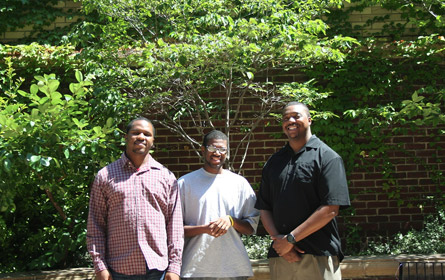
When Chimore Mack Glover recently turned 21, she aged out of the New York City foster child program and so needed a place to live.
"I usually plan things ahead of time, and my first step was to get a job and find a place to live," she recalled recently. She tried to stay with family members, but one turned her down, Her grandmother was sick and so could not help. "It was also very scary because I didn't know if my foster care agency was going to help me or not," said Glover.
Despite all that, Glover now says she is doing well -- living on her own and working part time. She dreams of being a journalist some day, saying, "My grandmother always told me to chase my dreams. I love to write. It’s an outlet. If I am going through something, I will just write it down. Then I’m relieved and I’m not stressed. "

While things may have worked out well for Glover, every year hundreds of young adults must adapt to life after foster care-- and a number do not succeed. For many the transition presents a huge challenge, and though programs exist to help, they cannot aid all the young people who need it.
On Their Own
There are currently 16,000 children in the foster care system throughout New York City. Of them, about 1,100 leave the system each year, according to In Transition: A Better Future for Youth Leaving Foster Care, a report published in the New School’s Child Welfare Watch.
The majority attempt the transition to independent living on their own. Most lack any type of a strong support network. Not surprisingly, for these young adults, the transition to the "real world" abounds with financial, physical and emotional hardship.
Child Welfare Watch and an internal city review have found that about 15 percent of young adults who age out of foster care end up in the homeless shelter system within two years of their initial discharge.
"In extraordinary numbers, children who age out of the foster care system end up homeless, incarcerated or both in a brief time period," said Topher Nichols, the communications manager at Children’s Village, a New York-based organization devoted to professional and educational development for troubled youth. "When we really look hard at our own experiences as young adults, how many times we called home because we were a little short on rent or because we made a silly mistake and needed support, we have to recognize that most of us don't become successful on our own. We have a network of people who support us and take care of us. This is a critical piece missing from the lives of most youth aging out of the city."
The one-time foster children also do not have the same opportunities as many young adults, especially when it comes to education, employment and housing, which are all connected, said Kim VanBurch, coordinator of youth development at the Vincent J. Fontana Center for Child Protection. "If they don't have an education, then they can't find employment, and if they can't find employment then they won't be able to secure housing," VanBurch said.
Preparing for the Big Change
The foster care agencies -- private organizations under contract with the city to place children in appropriate homes and monitor their care -- are supposed to prepare the children under their auspices for life after foster care, said Elysia Murphy, the deputy communications director at the city's Administration for Children's Services.
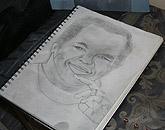
"Prior to leaving care, foster care caseworkers work with adolescents to develop plans in preparation for their discharge from foster care. Agencies are expected to set developmentally appropriate expectations that encourage youth to achieve their highest potential in their careers, educational and personal lives and to enable youth to plan responsibly for their own needs," Murphy said.
Advocates, though, say many agencies don't start this preparation until a few months before the youth is slated to leave the foster care program. This leave the young adults, some of whom suffer from mental illness and emotional instability, with few resources to turn to when trying to find a place to live and a source of income.
"In the vast majority of cases meaningful transition planning by the agencies responsible for a young person in foster care ... occurs, if at all, in a last minute scramble in the months before the adolescent is to leave foster care," said Glenn Metsch-Ampel, the deputy-executive director of Lawyers for Children. "More often than not, without the intervention of their advocates and the court, these young people are faced with the prospect of leaving foster care without truly stable housing, employment or a connection to a caring adult in their community."
To add to the difficulty, the Administration for Children's Services has suffered budget cuts over the past few years that affect its ability to handle issues confronting the city's low-income youth.
"ACS has just had budget cut after budget cut, and its internal operation services have really fallen apart. Without there being strong support inside the agency, it just means those services become vulnerable and haphazard. That means that foster care agencies do not deliver services with the same consistency," said Abigail Kramer, the associate editor of Child Welfare Watch. According to research published in Child Welfare Watch, the number of families participating in preventive service programs, which help children in foster care and neglectful or abusive homes, has dropped by 30 percent decline since 2009.
Murphy, though, denied budget cuts have had an effect on transition programs. "Despite the difficult decisions made in the past two years to reduce agency spending in response to the financial climate, the agency has been able to sustain funding to support services for youth in foster care as they make the transition into adulthood," Murphy said.
Bridging the Gap
Both New York City social workers and government officials have recognized that many young adults aging out of foster care are not adequately prepared to enter into independent living without any familial or professional support network.

In 2005, the city and the state created the New York/New York III program. According to Child Welfare Watch, it provides funding for about 400 young adults who have aged out of foster care. Many of the supportive housing programs receive New York/New York III funding and thus, are able to support their residents. However, there is still a huge population of young adults leaving foster care who are left with very few options.
In the past decade, government officials, philanthropists and non-profits have created transitional housing programs. These support programs not only house young adults who have aged out of the system (at 21 in New York though they can leave at 18), but also provide them with the life skills training, academic and professional advice, and counseling to help them achieve stability in their own lives.
In the past 10 years, eight non-profits have cooperated with city agencies to establish various supportive housing programs scattered throughout the five boroughs. Most of them receive funding from a combination of private donations, and city and state programs, such as the New York State Supportive Housing Program and the New York City Department of Health and Mental Hygiene.
Sharp cutbacks to Section 8 housing vouchers and the elimination of the Advantage program, which provided rent subsides for homeless families, has severely limited the housing options for these young adults and homeless people alike. These cuts make transitional housing programs an even more important safety net for young adults coming out of foster care.
Inside Supportive Housing
In 2001, Schafer Hall became one of the first supportive housing programs established in New York City. Located in East Harlem, Schafer Hall is one of the many housing developments run by the Lantern Group, a non-profit committed to the construction and development of permanent, special needs housing.
Schafer Hall was created to help young adults acquire the independent living skills necessary to achieve a stable lifestyle. Each resident lives in one of 25 studio apartments where he or she learns how to prepare meals, maintain a clean living space, do laundry and budget their money along with other basic skills. The residents also meet regularly with on-site caseworkers and tutors who help them make decisions about their education -- obtaining a GED or working toward an associate's and bachelor's degree -- and employment.
"Our young adults are incredible bright, strong, and resilient individuals," said Jessica Katz, the executive director of the Lantern Group. "They just need to learn the necessary life skills."
The young adults living at Schafer Hall must have some source of income and use 30 percent of it to pay their monthly rent. This teaches them how to balance a budget and set aside a portion of their monthly income for their housing needs.
Many of the other supportive housing programs in the city-such as Chelsea Foyer and the Lee also charge their clients rent and encourage the residents to seek stable employment, as opposed to welfare, as their primary source of income.
The young people, many whom leave foster care without a college degree or even a high school diploma, have limited job prospects, particularly in this economy. Despite that, Schafer Hall currently has an 85 percent employment rate amongst its residents.
For many individuals living there, Schafer Hall offers an escape from the tumult of their foster homes.
"I enjoy my home being a stress-free environment now. I'm not really territorial, but I know in my head that this is my house and no one is stressing me out. I don't have to worry about that living here, and that is good enough for me," said Anthony Boyd, a 22-year-old resident, who attends Queensboro Community College and works at , a human services organization.
Joseph Branca, also 22, has been in foster care for 13 years. He now lives at Schafer Hall, works as a shift manager at Duane Reade and attends Medgar Evans College in Brooklyn. "I want to give back to the community," he said. "Since I grew up in foster care, I feel like I can."
In Tough Times, Food Stamps Leave Many Hungry
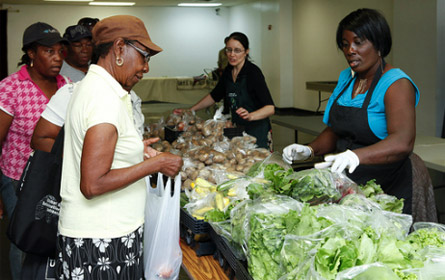
William Henry expends a lot of energy to try to stretch his $50 in food stamps for an entire month. "It takes discipline to make sure that the money lasts when I go to the supermarket. I have to take my calculator," he said.
But despite his best efforts, Henry does not always succeed. "Most months there are four weeks, and once in a while it's five," he said. "Sometimes in the fifth week the money runs out, and that's when I go to a pantry."
The West Side Campaign Against Hunger operates one such pantry. It gives emergency food aid to people who need to supplement their monthly food stamp benefits. Located in the basement of the Church of St. Paul and St. Andrew, the pantry serves a variety of customers. Many of them wait patiently in lines that snake around the basement and out the door. When called on, the clients select fresh and canned food from shelves in a back room.
The West Side Campaign Against Hunger is one of many private organizations that play a pivotal role in feeding New York City's hungry. With many people who need aid not receiving food stamps -- and with the benefits too small to cover the expenses of many of those who do -- private, nonprofit organizations provide an increasing amount of food assistance in New York City. A number of organizations say they simply cannot handle the task -- and should not have to.
"Ending hunger is a huge priority, and charity cannot and should not shoulder the bulk of this burden," Joel Berg, the executive director of the New York Coalition Against Hunger wrote in the coalition's annual hunger survey.
A Shift in Responsibility
Some 2.3 million New Yorkers – or 12.4 percent of all state residents -- faced food insecurity in 2007 to 2009, a sharp increase from the 9.4 percent in the three previous years, according to Hunger Action Network of New York State. In February the number of state residents receiving food stamps hit a record 3 million, a 65 percent increase over five years, the Daily News reported.
In the city, about 1.8 million residents get food stamps. The programs purchased more than $3.2 billion worth of food in the city in 2010, according to the Coalition Against Hunger.
While participation in the food stamp program -- officially known as the Supplemental Nutrition Assistance Program -- has been increasing, U.S. Department of Agriculture statistics from 2008 found that only 53 percent of all New Yorkers eligible for food stamps in 2008 actually got them. This – and the shortfall in benefits -- compels some 2.3 million state residents to seek emergency food aid every year.
In its 2010 Hunger Survey, the Coalition Against Hunger reported that demand at the city's more than 1,100 food pantries and soup kitchens in New York City increased 6.8 percent from 2009 to 2010, in addition to the 20.8 percent increase from 2008 to 2009. The fasting growing need for services came from families with children.
The need for private assistance has been growing since the Reagan administration, according to a study by Beth Osborne Daponte of Yale University and Shannon Bade, a senior organizer at the Organization of the North East in Chicago. It dropped tens of thousands of Americans from the food stamp program, a federal program administered by states and cities. Then the Clinton-era changes in the welfare system under the Personal Responsibility and Work Opportunity Reconciliation Act, tightened eligibility requirements and decreased the monthly benefits. Closer to home, in 1997, New York City began requiring anyone applying for food stamps be fingerprinted in order to prevent fraud.
All this forces some needy people them to turn to private groups. The increasing reliance on the non-profit organizations concerns many who run them.
"The myth we're up against is civil society and nonprofits around the city can take over the burden from the public sector whose job it is," said Michael Paone, the community organizer for the Coalition Against Hunger. He added that while private agencies have great intentions, they "lack agility" to deal with the city's hunger problem.
"This is the wrong prescription for the problem," said Paone. “It's a much larger and deeper issue than just creating more food programs. Creating jobs and taking people out of poverty is the real solution."
The Dollar Forty-Eight Menu
The maximum food stamp benefit for a family of four in fiscal year 2010 was $668 a month, with the average recipient now getting $133.80 – or about $4.46 a day. To receive benefits, a family's income must be no higher than 130 percent of federal poverty guidelines, or roughly $2,389 a month for a family of four in most of the country.
A number of restrictions exist on what recipient can use their food stamps for -- although the federal government recently rejected a bid by the Bloomberg administration to ban their use for the purchase of sugary soft drinks. The benefit cannot be used for food bought in restaurants, alcohol, non-food items, including soap, or food purchased hot.
In late 2010, City Council Member Ydanis Rodriguez ate for five days on the average food stamp benefit – about $4 a day. "I usually was out of money by lunchtime, my ability to concentrate suffered, and by Friday, I had no other choice but to go to a food pantry for extra food," he later wrote.
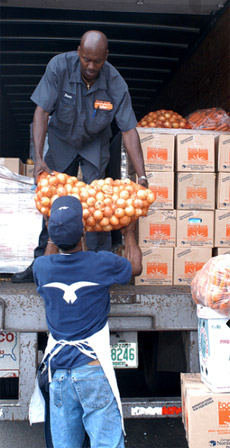
At times during the week he cooked rice and other dried goods to stave off hunger but he was unable to afford "vegetables, fruits, dairy and protein." He added, "I do not need to repeat what we already know – that it is impossible to still eat a healthy balanced diet off $4.33 per day."
Increasing the Rolls
For many New Yorkers, though, that $4.33 would help – yet they either have not applied for or have not received food stamps. A number of things might account for this, Sandra Jean-Louis, the director of the Access to Health and Food Benefits program at Public Health Solutions told City Council in 2010.
"Many are not aware of the requirements. For others, English is a second language and they require help completing the application form. More are too ashamed to accept government assistance. Others may fear that accepting food stamps will lead to their deportation," she said. Jean-Louis also noted that "procedural barriers," such as not being able to find the food stamp office, difficulties with the application or being asked unnecessary questions during the food stamp interview, also keep some New Yorkers from receiving benefits.
The Bloomberg administration has said it has tried to reach out to possible recipients and make it easier for then to get food stamps. During a City Council hearing on hunger, Human Resources Commissioner Robert Doar testified that his agency has developed partnerships with community-based organizations that take applications for food stamps and then submit them to Human Resources Administration electronically. The agency's outreach staff also visits community-based organizations to conduct interviews and help submit applications for food assistance.
Doar has noted that changes to the recertification process make it far more convenient. Recipients used to have to have their eligibility for food stamps checked and renewed every six month. Now that has been extended to once a year. In addition, the recertification interviews now can be conducted over the phone rather than in person. And to make fresh fruits and vegetables more available to recipients, city greenmarkets started accepting Electronic Benefit Transfers at farmer's markets.
All of this may have contributed to the rise in food stamp use. The number of people getting food stamps in both the state and city increased by between 12 to 13 percent between 2009 and 2010 and "almost 65 percent" since 2006, Elizabeth Berlin of the state Office of Temporary and Disability Assistance told City Council last year.
Doar said that he was "stunned" to hear participation rates rose by 60 by 70 percent. "That would be amazing. I hope it happened," he said.
SNAP Barriers
Advocates attribute the increase in the number of people receiving benefits more to rising need than to a better effort by the government. "SNAP is a countercyclical program. During recessions it's there to respond to need and enroll as many people as needed," said Hannah Lupien, a food policy strategist at West Side Coalition Against Hunger.
She and other advocates say the government has to do more to ensure all who are eligible for SNAP receive aid, and they charge that some city rules drive away participants. For example, New York City requires applicants seeking food stamp benefits to undergo a fingerprint imaging process, even as the state has discontinued this policy. Joel Berg has cited studies finding one in 23 people did not apply for food stamps because of the finger-imaging policy but that the fingerprints detected only 31 cases of fraud in 2006 – or one for every 35,000 people.
In a testimony before City Council, Doar defended this policy saying it was designed to prevent recipients from receiving duplicate benefits.
Lupien finds that hard to believe. "When is the only other time you get fingerprinted?" she asked. "When you’re arrested! It's a loud and clear message that applicants are not to be trusted because they're poor or because they're asking for help."
"Why should we have to take fingerprints? We didn't commit a crime. I don't think it should be a policy that people must be fingerprinted in order to eat. If people don't want to do it they will starve," said Gloria B., a member of the Coalition Against Hunger's Food Action Board who asked that her last name not be used. "It's not a crime to ask for food. It's not a crime to lose a job."
Not everyone objects to the finger imaging. Lotrina Kinsey, a customer at the West Side Coalition Against Hunger's pantry said that fingerprint imaging was "normal." The long waits, finger imaging policy and application process were “to be expected. It is an all day process and very time consuming," she said.
Picking Up the Slack
Whatever the reasons, many people in these difficult times turn to private groups to get help to feed themselves and their families. This has put a strain on those organizations.
Of all the agencies in the city, 51.4 percent were unable to meet demand in 2010, a smaller percentage than the previous year. Despite the decrease, 42 percent said a lack of resources forced them to turn away hungry people, cut portions or reduce hours, according to the Hunger Survey Report. When that happens, Paone said, "Often times agencies will indeed give referrals to other agencies. … It's not uncommon for folks to patronize multiple agencies -- and when food is scarce, they have to 'shop around' even more."
At the West Side campaign's food pantry, Zoila Estrella, a volunteer, customer and food stamp recipient, said that her benefit usually lasts most of the month largely because she only has to support herself. "Food stamp benefits need to be increased for those who need and use it," she said through a translator, "especially for bigger families, families with children and the working poor."
"So many people are going through a hard time, and it's not easy when you have bills to pay. I know the government is trying to do a lot but it's still not enough," said Gloria B. "Even soup kitchens are getting low and children are crying. … America has a lot of money, people shouldn't be that hungry."




